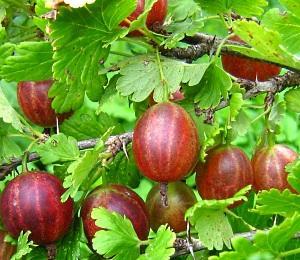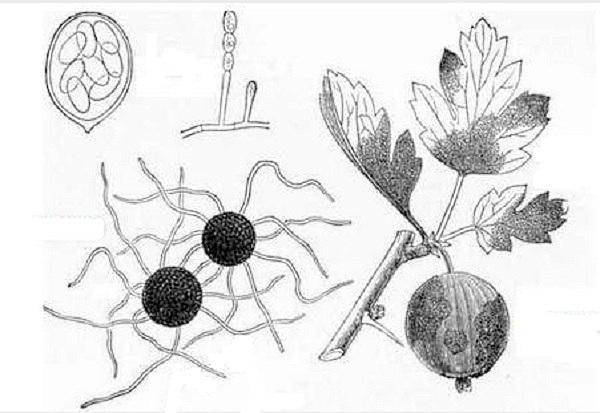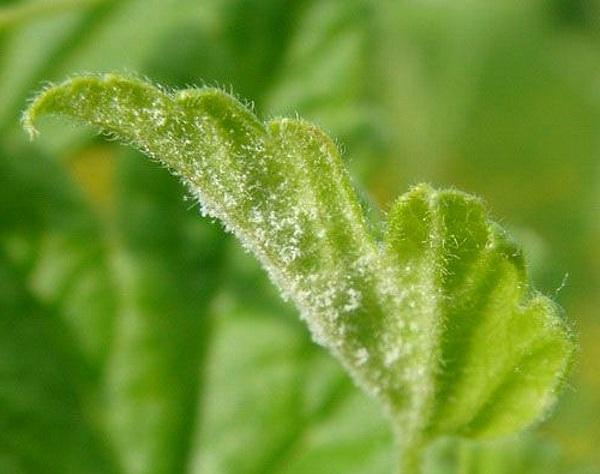Measures to control gooseberry powdery mildew and prevent its spread
 The sweet and sour gooseberry is loved by many gardeners. And how to do without a single bush in your summer cottage, knowing about the great benefits of gooseberries? After all, it is the richest source of vitamin C.
The sweet and sour gooseberry is loved by many gardeners. And how to do without a single bush in your summer cottage, knowing about the great benefits of gooseberries? After all, it is the richest source of vitamin C.
That's just, growing this berry in their garden, not everyone manages to get large and beautiful fruits of the crop due to ignorance of how to protect bushes from various pests and diseases. One of the most difficult problems for novice gardeners is the appearance of powdery mildew on gooseberries. This disease is the worst enemy for the plant, which destroys not only the fruits, but also over time kills the viability of the entire bush, affecting even the roots.
Powdery mildew
Powdery mildew on gooseberry is a fungal disease spread by microscopic spores. Gooseberry bushes can become infected through insects that carry spores, or myceliums with spores can get onto the plant bush using wind masses.
Read also the article:gooseberry disease! Powdery mildew develops not only on gooseberry bushes, but is also the worst enemy of raspberries, currants, yoshty
Powdery mildew develops not only on gooseberry bushes, but is also the worst enemy of raspberries, currants, yoshty
 Powdery mildew affects not only the leaves of the bush, but also the young shoots of the gooseberry.
Powdery mildew affects not only the leaves of the bush, but also the young shoots of the gooseberry. 
 If you do not take measures in time, then powdery mildew eventually affects the gooseberry fruits.
If you do not take measures in time, then powdery mildew eventually affects the gooseberry fruits.
The disease begins its development at the end of May, when the gooseberry forms new shoots and throws out color for the further formation of the fruit ovary. Warm weather and humid atmosphere create favorable conditions for spore breeding.
The development of the disease begins with the lower branches of the bush, it is on them that last year's infecting spores can survive. Many summer residents, not recognizing powdery mildew at the very beginning, are surprised at this picture.  This is how powdery mildew looks after a few weeks, the light bloom becomes rough and will change its color to brown. Such fruits are unsuitable for consumption, since the rind is very difficult to peel off the berries, especially when they are ripe.
This is how powdery mildew looks after a few weeks, the light bloom becomes rough and will change its color to brown. Such fruits are unsuitable for consumption, since the rind is very difficult to peel off the berries, especially when they are ripe.
All affected leaves curl over time, stop growing, and the shoots change their arched shape and dry out. Most of the ovary will fall off, resulting in crop loss. If the plant is not helped, then it simply dies.
How to deal with powdery mildew?
Even complex diseases of fruit shrubs such as powdery mildew can be prevented and conquered. Controlling powdery mildew involves three approaches.
- Agrotechnical - applicable for minor damage to the bushes, when isolated cases of damage are found.
This method consists of planting powdery mildew-resistant gooseberry varieties and timely pruning of infected branches in autumn or early spring.
Resistant varieties include Kolobok, Harlequin, Ural Grapes, Grushenka, Kuibyshevsky, Mashenka, Senator, African, Yubileiny, Finsky, Houton.
The cut infected material is burned or buried in the soil in places remote from the gooseberry plantation.
With the onset of the first spring heat, it is necessary to remove last year's foliage from under the gooseberry bushes, which can also serve as an excellent breeding ground for spores.
Damaged leaves and branches must be removed immediately. Before the buds swell on the branches of the gooseberry bushes, they are treated with a solution of potassium permanganate heated to 90 ° C, it is the hot shower that disinfects all the branches and soil under the bush itself (two tablespoons of potassium permanganate are diluted in ten liters of water).
It is worth feeding the gooseberry bushes only with potash and phosphorus fertilizers, which are responsible for the formation of full-fledged strong shoots that can resist powdery mildew, while nitrogen fertilizers, on the contrary, inhibit the development of young shoots, due to which they are more susceptible to damage by this disease.
- Chemical - applicable when large gooseberry plantations are infected and consists in spraying the bushes with potent drugs.
It is recommended to spray the bushes before and after flowering for a more effective result.
To do this, use copper sulfate (one hundred grams per ten liters of water), drugs "Topaz", "HOM", "Tiovit Jet", "Vectra", "Cumulus".
- Agrochemical - a combination in practice of the above methods of combating powdery mildew.
On the question of how to deal with powdery mildew on gooseberries, folk recipes are also valuable, the effectiveness of which has been proven by the practice of many gardeners.
Traditional methods of treating gooseberries from powdery mildew include the following measures of influence:
- preparation of a solution for spraying gooseberry bushes from soda and laundry soap grated on a coarse grater (fifty grams of soda and soap for ten liters of water);
- preparation of a solution with ash (for ten liters of water, three kilograms of ash);
- preparation of a solution with urine (for five liters of water, one glass of urine).
Spraying the bushes is carried out in the same way as with chemicals, before and after flowering, if necessary, the action is repeated several more times.